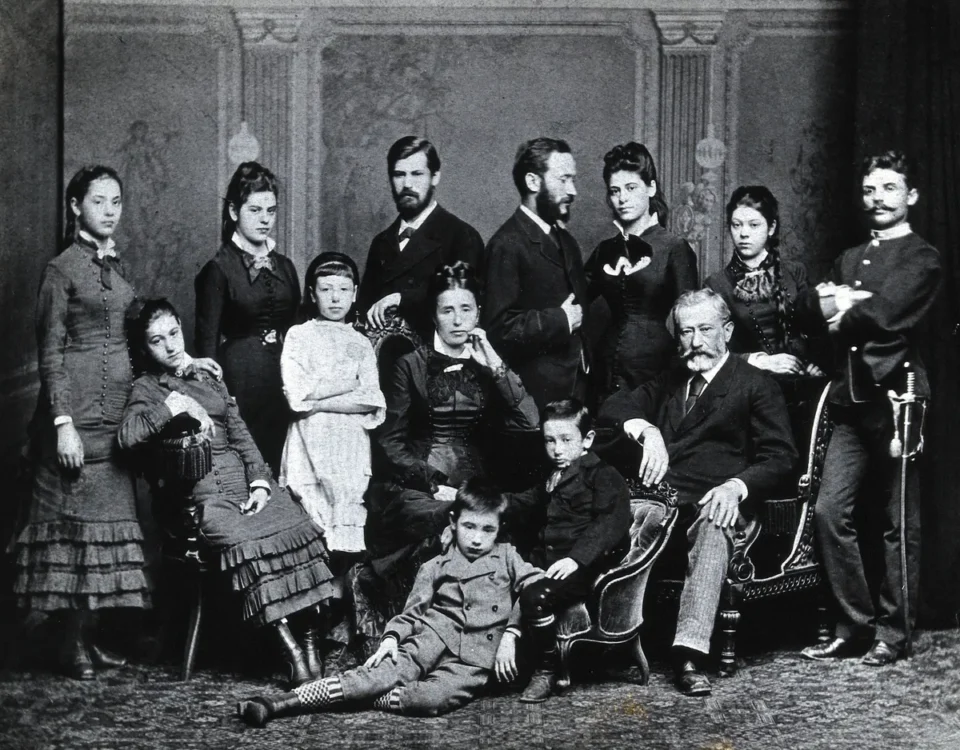
Mastering Mental Health: A Comprehensive Guide for Medical Students – 2025
April 11, 2025
From Basic Sciences to USMLE Step 1: A Comprehensive Guide to Thriving in Medical School (2025 updated)
April 11, 2025Summary (TL;DR)
Optimize passive learning by pre-reading materials or listening to lectures during daily activities. Incorporate visual tools like anatomy atlases, 3D models, and coloring books, and simplify complex concepts with mnemonics and etymology. Use flashcards and spaced repetition to reinforce memory, and apply what you’ve learned to real-life scenarios.
Stay focused by eliminating distractions and using techniques like the Pomodoro method. Reward yourself for small wins, and prioritize sleep, nutrition, exercise, and mental health to stay sharp. By combining these approaches, you’ll excel not only in anatomy but across all areas of medical school.
Medical school is a challenging journey that requires immense focus, dedication, and effective learning strategies. Whether you're tackling anatomy exams, memorizing vast amounts of information, or battling study slumps, having the right tools and techniques can make all the difference. In this comprehensive guide, we’ll explore actionable tips and strategies to help you study smarter, stay motivated, and achieve academic success.
Start Early and Stay Consistent
No matter how big the procrastination beast is, our will shall be greater. Starting as early as possible gives you a great advantage; you'll have the ability to alter your approach if things don’t go well. Starting anatomy a few weeks before exams can be disastrous. Too much information, too little time. Therefore, try to find the motivation to start your studying early, and future you will thank you immensely.
Similarly, consistency is key. Studying for long hours without breaks is counterproductive. Instead, break your study sessions into manageable chunks using techniques like the Pomodoro method. This involves studying for 25 minutes, taking a 5-minute break, and repeating the cycle. After four cycles, take a longer break of 25 minutes. This targeted approach ensures you retain more information without burning out.
Use Active Learning Techniques
Active learning is when a student is involved and cognitively engaged in the learning process. This type of learning takes more effort and interaction but is a much more durable method. There aren’t many cons to active learning, but it’s not easy. It takes a lot of practice and discipline since it requires a lot more thinking. That being said, the pros outweigh the cons. Active learning provides better retention, fosters collaboration, develops problem-solving skills, and improves critical thinking.
One way to engage in active learning is by asking questions. Application is key. For example, understanding why the action potential of a muscle is different from that of cardiac cells can deepen your comprehension. When you understand a concept, the less you have to memorize. Another powerful technique is teaching. As the saying goes, "See one, do one, teach one." Teaching is one of the best ways to solidify what you know because you have to explain the material clearly.
Optimize Passive Learning
Passive learning is relatively simple but not efficient in the long run. It involves receiving information without feedback, such as watching documentaries, listening to lectures, or reading nonfiction. While passive learning has its advantages—like being easy to implement—it often fails to ensure retention or application of knowledge.
To optimize passive learning, incorporate strategies like pre-reading or pre-watching materials before lectures. For instance, if you’re studying pathology, watch Pathoma videos on the topic the night before class. This gives you an overview of the material, so you’re not lost during the lecture. Additionally, you can listen to audio lectures during activities like driving, cooking, or walking. During my first semester, I rewatched histology lectures just before sleeping to prime my brain for the next day.
Use Visual and Tactile Tools
Anatomy, in particular, benefits greatly from visual and tactile learning tools. Using a 10-pound anatomy reference book is much less effective than using an atlas where structures are drawn well, and you can clearly see the origin and insertion of each muscle. Netter’s Atlas of Human Anatomy is a great place to start. If you’re anything like me and love to trick yourself into thinking you’re doing work, try an anatomy coloring book. Not only am I studying, but I’m coloring while I’m at it. My brain is tricked into thinking I’m training to be an artist, but in reality, I’m tracing the origin and insertion of the quadriceps muscle. Got you, brain!
Looking and feeling 3D models will also include a tactile learning element, further hammering the points down. Some libraries allow you to borrow a 3D model to take home and study with. Going to live dissections can be another way to make tactile connections. Some dissections are also available online if you aren’t able to attend a real one.

Make Flashcards and Use Mnemonics
Active recall is one of the best ways to study anatomy (or any other subject). As mentioned earlier, anatomy is greatly based on pure memorization. So try to make your own Anki deck and hammer that down, or use a ready-made anatomy deck such as Dorian’s anatomy or Anatoking. When making my own Anki deck for anatomy, I used the Image Occlusion Tool to enhance my recall of the locations of muscles. This tool allows you to draw boxes above areas in diagrams. Hence, try hiding the names of the foramina of the skull and review them as you go.
Mnemonics are easy ways to memorize long lists that would usually be much harder to memorize. For example, “The humerus SITS in the glenoid fossa” is a mnemonic for the muscles of the Rotator Cuff:
- Supraspinatus
- Infraspinatus
- Teres minor
- Subscapularis
A quick Google search or query on medicalmnemonics.com can help you find mnemonics online. However, creating your own mnemonics can make them easier to remember due to personal connections.
Apply What You’ve Learned
Learning new methods for time management and not applying them is like trying to fill a sieve with water. Once you’ve understood and summarized the text, you can now implement it into your everyday life. Start by including it in your daily activities, change your bad habits, and replace them with better ones. Simply apply the knowledge you’ve gained.
Write the things you want to change down and leave them somewhere you can see repeatedly throughout the day. Let your friends and family know about the changes you’ve learned and are trying to implement. Spreading knowledge is better than keeping it to oneself. This principle applies not only to self-development books but also to medical texts. Reading fiction is known to increase one’s ability to be more empathetic. The scenarios and characters in the book become an almost-reality that allows us to feel for the characters in the situation they are put in. It also increases our vocabulary, which we can then use in real life to sound more articulate. Regarding medical texts, reading articles and journals can increase your diagnostic skills and widen your knowledge horizons, making you a better doctor when that patient walks in.
Stay Focused and Eliminate Distractions
Maintaining focus during study sessions is crucial, especially in today’s age of digital distractions. Ensure that the area you are planning to study in is well-prepared to allow you to study optimally. Make sure that your desk is clean (even though many people prefer a messy desk, it might be best to clean it out for starters). Ensure you have a good chair to sit in and a desk at a suitable height for you to study comfortably. This environment includes the temperature: several studies show that cooler environments (between 20 and 25 degrees Celsius) lead to better study sessions with higher levels of focus.
Do not, under any circumstance, study in bed. You must separate your focus zone from your rest zone. Once you start studying in bed, your brain will have a very hard time concentrating. This is because your brain associates your bed with sleep and relaxation—the exact opposite of what we are trying to achieve. Therefore, separating those two zones is crucial.
To eliminate distractions, get rid of your phone or use apps like Moment (iOS) or AppBlock to block social media and games. Only keep what you need around you. Have a copy of The Catcher in the Rye near you? Put it away. Is that a Rubik’s cube? In the cupboard, too. Only keep what you are working on around you with the few extras that keep you going.

Take Care of Your Body and Mind
Staying healthy physically and mentally is so important and can directly affect your productivity. Schedule consistent workouts so that your brain and body remain fresh and active. Light jogging or a few minutes of exercise can energize you to get all your studying done. Taking care of your body is taking care of your mind.
Additionally, ensure you eat nutritious, healthy food that keeps you well-fed and focused. Some foods, like green tea, fish, and avocados, are known to increase focus. Moderate amounts of caffeine can boost concentration, but avoid excessive sugar, as it can lead to energy crashes. Adequate sleep is equally vital. Sleep deprivation diminishes neuronal activity and impairs recall ability. A 2007 study published in the Neuropsychiatric Disease and Treatment Journal emphasizes the importance of ample rest and sleep for optimal cognitive performance.
Reward Yourself and Stay Motivated
Short-term rewards are a great incentive to keep yourself going. This could be a bar of chocolate, an episode of your favorite show, or even a nap. These simple acts of positive reinforcement could be key to long-term success and eventually fulfilling your dreams.
What keeps me motivated is imagining the final destination. Being a leading doctor in my field of choice, helping as many people as possible, with as much knowledge as I can possibly get. Writing down why you want to fulfill your goals and revisiting them regularly proves useful to many. Making your goals public will also give you that push you need to keep going.
Review and Adjust
Continuing with a routine that isn’t giving you any gains is a plan for failure. You must review and adjust your progress at least monthly to ensure you are putting your efforts into good use. Sit down and assess where you stand and how well you’ve done the past few weeks. Check your shortcomings (if any) and plan to do even better in the future.
“Without proper self-evaluation, failure is inevitable” – John Wooden.
Conclusion
Mastering medical studies is no small feat, but with the right strategies, you can navigate this challenging journey successfully. From starting early and staying consistent to using active learning techniques and optimizing passive learning, these tips provide a roadmap for academic excellence. Remember to take care of your body and mind, eliminate distractions, and reward yourself for small victories along the way. By combining these strategies, you’ll not only survive medical school but thrive in it.

Topic FAQs
Take Your Medical Education to the Next Level with Physeo
Whether you're preparing for Step 1, Step 2, or striving to become a more confident and compassionate physician, Physeo is here to support your journey. Our resources are designed to help you master complex concepts, stay motivated, and achieve your goals.
📚 Unlock Premium Study Tools
Dive into our comprehensive video lessons, image mnemonics, and proven study plans tailored for success. Check out Our Plans to explore subscription options and find the perfect plan for your needs.
💡 Stay Inspired with Our Blog
Looking for tips on excelling in medical school, overcoming burnout, or balancing life as a student or professional? Check out our Blog. It’s your go-to resource for actionable advice and stories from fellow medical students and professionals.
📺 Boost Your Learning with Our YouTube Channel
Prefer learning through videos? Subscribe to our YouTube channel for free tutorials, step-by-step explanations, and expert insights to help you ace your exams and thrive in your medical career.
📱 Connect with Us on Social Media
Stay updated, inspired, and connected with Physeo across our social media platforms:
- Instagram: Follow us on Instagram for daily motivation, study tips, and behind-the-scenes content.
- Facebook: Join our community Here for updates, discussions, and support.
- LinkedIn: Connect with us professionally at LinkedIn for industry insights, career advice, and networking opportunities.
🚀 Ready to Excel?
Invest in yourself and your future patients by joining the Physeo community today. Let’s work together to create a generation of healthcare providers who lead with knowledge and compassion.
Start Your Journey NowAuthor
Mitali Chansarkar, Noon Hagmusa and Abu Huraira Khan
Content Creators
Latest articles
Our newsletter
- Work-Life Balance
- USMLE Prep
- Study Tools
- Stress Management
- Spaced Repetition
- Residency Applications
- Physeo
- Personal Growth
- Pathology Education
- OB/GYN Specialty
- Nutrition
- Neuroscience
- Mental Health
- Medical School Tips
- Healthcare Innovation
- Global Health
- Fitness & Wellness
- Faith & Medicine
- Doctor-Patient Relationships
- Creativity in Science
- Career Planning
- Anatomy Mastery











